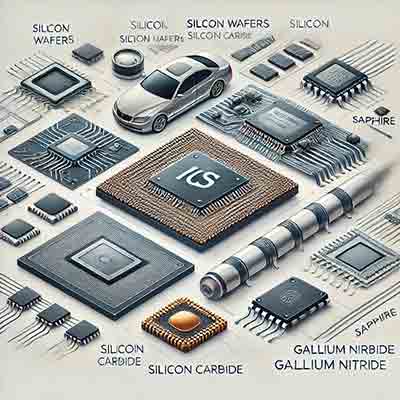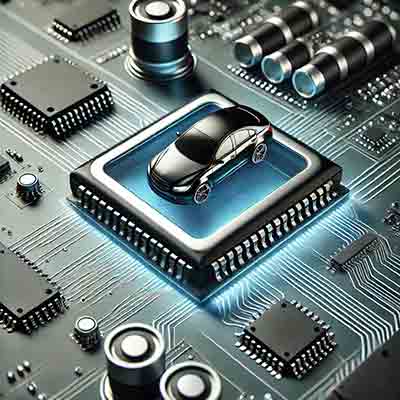Introduction
Fabricating integrated circuits (ICs) for gas and electric vehicles requires materials and substrates that can withstand harsh environments. This page explores the most commonly used materials and substrates.

Common Substrates
1. Silicon (Si)
The most widely used substrate due to its cost-effectiveness and compatibility with standard fabrication techniques.

2. Silicon Carbide (SiC)
Preferred for high-power and high-temperature applications like inverters and converters in EVs.
3. Gallium Nitride (GaN)
Used for high-frequency and high-efficiency power devices, such as chargers and RF systems.
4. Sapphire (Al₂O₃)
High thermal stability makes it suitable for optoelectronic devices like LEDs.
IC Fabrication Materials
- Semiconductors: Silicon, SiC, GaN, and GaAs for various applications.
- Dopants: Boron and phosphorus to modify conductivity.
- Dielectrics: Silicon Dioxide (SiO₂) for insulation, High-k materials for advanced devices.
- Interconnects: Copper (Cu) for low resistance and Tungsten (W) for contact points.
- Packaging: Ceramic, polyimides, and epoxy compounds for protection.
Applications in Gas and Electric Vehicles
- Power Management: Inverters, converters, and motor controllers for EVs.
- Sensors: Pressure, temperature, and voltage monitoring in both gas and electric vehicles.
- Connectivity: Communication systems using GaN and Si-based ICs.
- ADAS: Radar and LiDAR systems for advanced driving features.
- Lighting: LED drivers and optoelectronics.